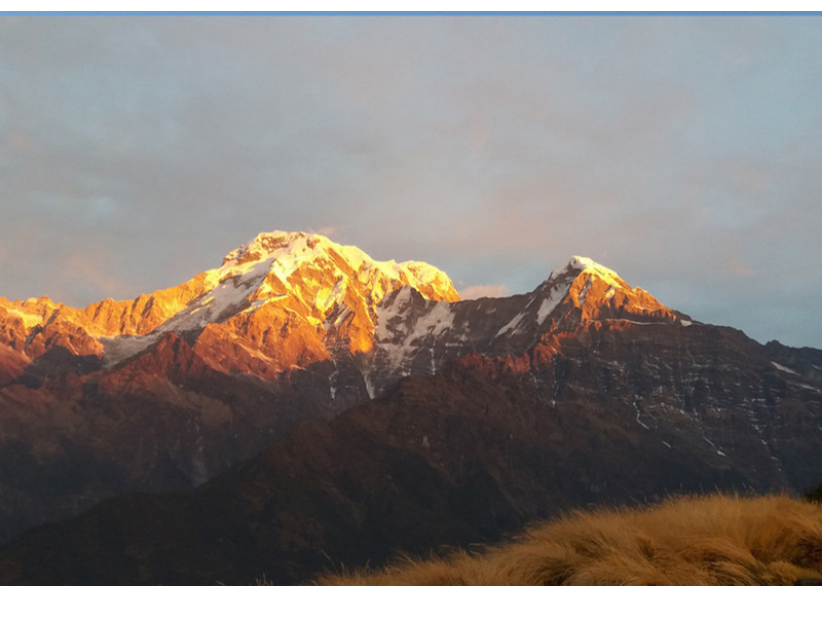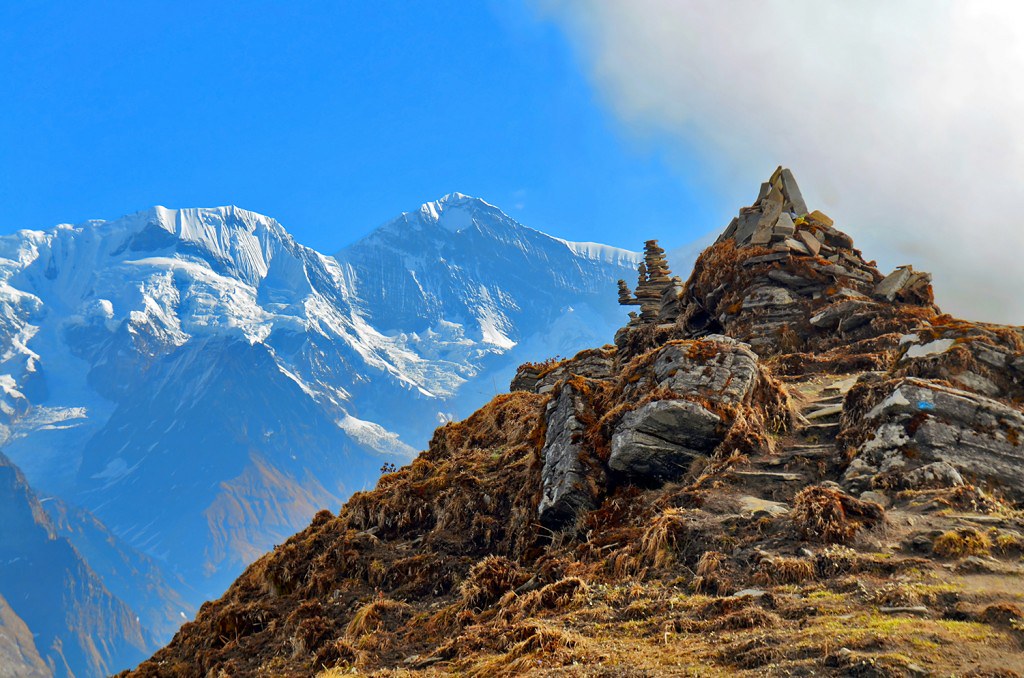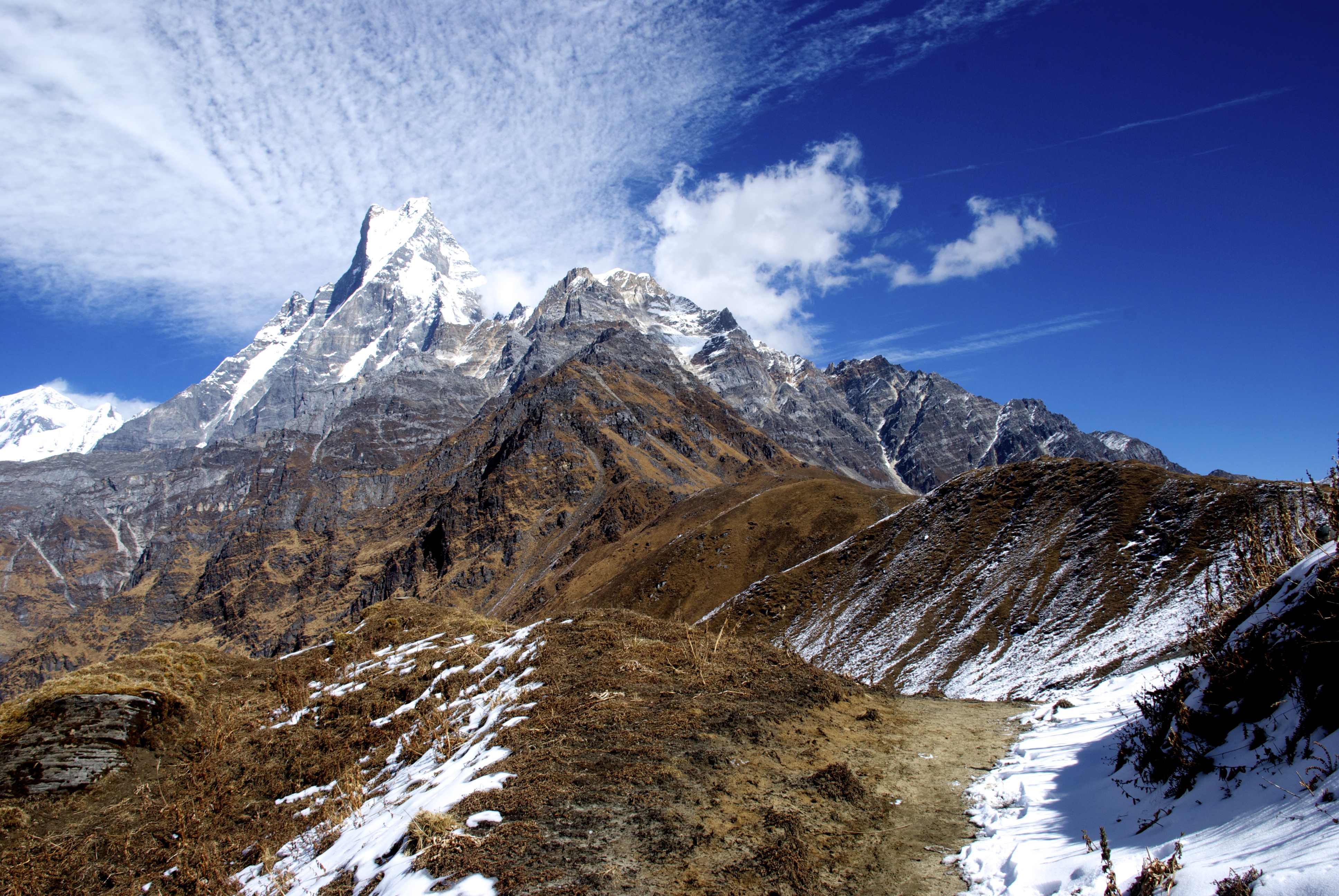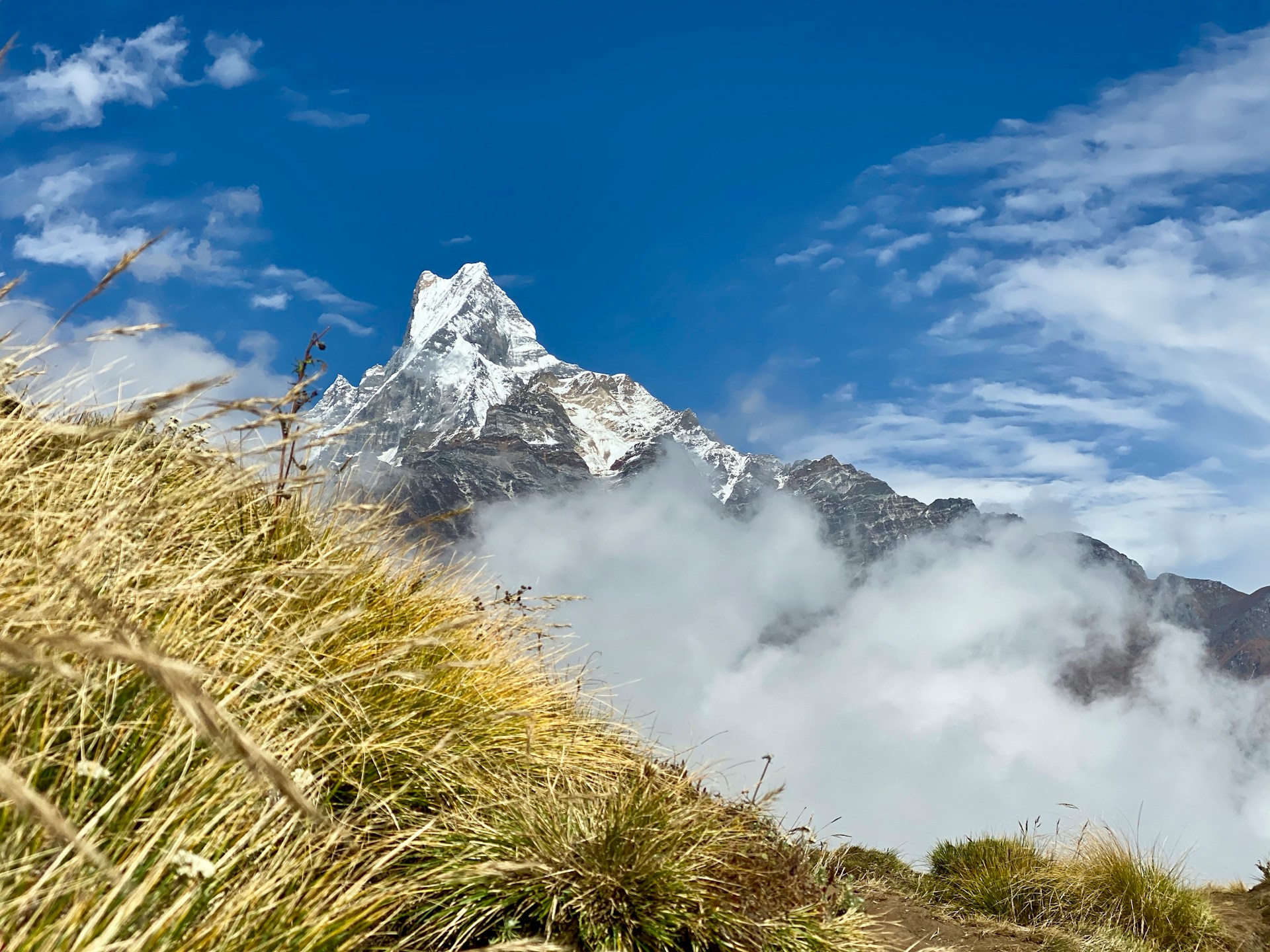Difficulties Arise on the Mardi Himal Trek
Mainly, the concern from trekkers about the Mardi Himal Trek is the level of difficulties, which is minor level (moderate) in the Himalayan trekking trail. This trek is not difficult in terms of technical difficulty. Compared to any other treks in Nepal, Mardi Himal is one of the easiest treks to complete successfully.
As the highest elevation of the Mardi Himal Base Camp trek sits at (4,500m), the trek itself allows visitors to begin their lifetime journey in the Himalayan region also in a short time span. Everyone can embark on this charming adventure without any hesitation but the trekkers have to be physically fit. The walk will take around 5-6 hours each day to set foot on the base camp of Mardi Himal. It will not be a problem for you to walk, with regular breaks and rests, you can complete this trek quite easily.
Moreover, it is feasible for trekkers of all fitness levels, as long as they are in good health. Although, accomplishment depends on the sole trekker's physical and mental well-being.

Altitude-related Health Concerns during the Trek
The provocations of the Mardi Himal trek are exacerbated by the risk of altitude sickness, which has become progressively frequent on this trek. With altitudes reaching 4500 meters on the Mardi Himal trek, which is not as high as other trekking but also altitude sickness is a matter of concern.
Altitude illness is experienced in different ways, including nausea and diarrhoea. Headaches and loss of breath are also aspects effects. The best way to heal with this difficulty is to stay hydrated drink a lot of water and let your body return to normal by descending into lower altitudes.
It’s still important to acclimatize properly and take your time during the trek to avoid any health issues. It’s recommended to take regular breaks, stay hydrated, and avoid alcohol and cigarettes during the trek.
Furthermore, Alcohol is strictly prohibited throughout this wander as it contributes to dehydration. Make sure to Keep a bottle of water on yourself and give yourself a proper time to figure out what is happening.

Mardi Himal Trek: Distance and Duration
The Difficulties during the Mardi Himal Trek also determine the actual distance and duration for many trekkers. As all is clear now, the distance covered by this trek is around 41km only as well the duration may differ by the various routes specialized by the agency. As per our itinerary, the total duration is about 10 days which is a very short period to discover the magic of the Himalayas.
For beginners, going for a longer duration can be superior, permitting you to keep away from rushing during the trek. Clinching a gratifying trek without compromising your health is pivotal.
If you have a precedent trekking experience, going for a shorter trek duration is achievable. Alternatively, if you wish to examine deeper into exploration and relish every moment, choosing a longer duration is also a worthy choice. It depends upon the trekker’s choice to extend or reduce due to their health conditions.

Ideal Timing and Favorable Weather to Discover the Mardi Himal Trek
Due to the changes of weather conditions and not appropriate time, it usually affects the trekking period so it is one of the major difficulties that occurs in Mardi Himal Trek. No one can predict the situation, but there are several ways to prevent it and make your lifetime journey amazing. Choosing a more worthy season will accord to a smooth Mardi trek, essentially influenced by weather conditions, nevertheless of other contemplation.
The difficulty levels of the Mardi Himal Trek vary depending on the weather and season. Here, we will adorn how perfectly your Mardi Himal Trek will unravel based on the predominant weather conditions and the time of the year. Read about the main season to embark on while planning to trek in Mardi Himal;
Spring
Spring, the months from March to May, stands as the best of the trekking season, drawing admirers from around the world to the Nepali Himalayas. Throughout this period, the weather is gratifying, rainfall is minimal, and trekking conditions are at their best. Although daytime temperatures along the trail remain mild, higher altitudes like Mardi Himal Base Camp can be quite cold in the early morning. Considering the best season in the Annapurna region provides an exhilarating experience with the greatest views and delightful trekking trails.
Autumn
Autumn, the months of (September, October, and November) stands as another best trekking season, comparable to spring, identified by praising and favourable conditions. Autumn elevates the Mardi region with a dry and congruous climate. The autumn season is generally regarded as the ideal time for trekking in the region, attracting a great number of trekkers, making it an energetic and sparkling period.
Winter
Winter, the months from December to February, presents the most thrilling conditions for trekking towards Mardi Himal. During this season, there is a visible decline in tourism activities, leading to a somewhat barren period in the tourism sector. The season itself can be quite challenging due to the harsh cold weather. Moreover, the weather conditions become even more severe as you ascend higher elevation. Lastly, wise planning is essential when preparing for the trek during these months.
Monsoon/Summer
Monsoon/Summer, the months of June, July, and August, brings raised temperatures, as long as a relatively admirable trekking experience. However, it corresponds with the monsoon /rainy season, resulting in constant rains and cloudy skies, which can restrain the visibility of the Himalayas. The trail becomes wet and slippery, with more risk of landslides. So, the trekking in this season is not done mostly but if any trekkers demand we will manage it anyway with measure precaution.
The main reasons to choose Mardi Himal Trek
Becoming the most popular treks in Annapurna region, Mardi Himal Trek offers mesmerizing views of the Mardi Himal (5,587 m / 18,330 ft), Annapurna I (8,091m/ 26538 ft), Annapurna South (7,219 m / 23,680 ft), Machhapuchre (6,997 meters / 22,950 ft), and Gangapurna Himal (7,454m / 24,450 ft) which surely sets you in an awful moment. With the peaceful trekking trail and the majestic high Himalayan vistas, this is the perfect demanded trek from all over the globe.
Roaming through forests shielded with oaks and rhododendrons, and wildlife such as Musk deer, Langurs, other monkeys of various species, Danfe (Lophophorus), and porcupines will excite you during the Mardi Himal Trek. A complete short and beautiful package of a hidden treasure where one can relish in stunning mountain panoramas, come across wildlife in thriving forests, and wander rivers and ridges within a short hike.
.jpg)
The best itinerary for Mardi Himal Trekking
Day 1: Arrival at Kathmandu (1300m)
Day 2: Drive to Pokhara (850m)
Day 3: Drive to Kande(1770m), trek to Forest Camp (2600m)
Day 4: Trek to Low Camp (3035m)
Day 5: Trek to High Camp (3850m)
Day 6: Hike up to Upper View Point(4200m), back to High Camp
Day 7: Trek to Siding Village (1945m)
Day 8: Siding Village to Pokhara
Day 9: Drive to Kathmandu
Day 10: Departure to International Airport

Permits Essentials for Mardi Himal Trekking
Without a permit, they will not get permission to enter in Annapurna region. Lying in the Annapurna Conservation area the Mardi Himal Treks demand two types of trekking permits which are listed below:
· Annapurna Conservation Area Permit (ACAP)
· Tourist Information Management System Permit (TIMS)
The cost of Mardi Himal Trekking permits, the ACAP permits are priced at NPR 3000, and the TIMS Permit is priced at NPR 2000. Nonetheless, for SAARC countries, there are various rates, with an ACAP permit costing NPR 1000 and a TIMS Permit costing NPR 600 per person.
Conclusion
With proper preparations, the challenges of Mardi Himal Trek difficulty can be successfully conquered. Mardi Himal Trek is manageable with good health and overall preparation. Before embarking on this trek, prepare yourself by walking for a couple of hours and doing some exercises for fitness. The trek will be assuredly awesome with only limited preparation.
Come and join us for a great exciting adventure of Mardi Himal in a short period. Allow us to provide an incredible experience in Nepal.

Mardi Himal Trek FAQS
How long is the Mardi Himal Trek?
- The Mardi Himal Trek typically takes around 6 to 8 days, depending on the chosen itinerary and trekking pace.
What is the best time for the Mardi Himal Trek?
- The best times for the Mardi Himal Trek are during the Spring (March to May) and Autumn (September to November) seasons when the weather is clear, and the views are stunning.
Is the Mardi Himal Trek suitable for beginners?
- Yes, the Mardi Himal Trek is considered a relatively moderate trek, making it suitable for trekkers with a basic fitness level. However, some sections can be challenging.
What is the highest point on the Mardi Himal Trek?
- The highest point of the Mardi Himal Trek is the Mardi Himal Base Camp at an altitude of approximately 4,500 meters (14,764 feet) above sea level.
Are permits required for the Mardi Himal Trek?
- Yes, trekkers need to obtain the Annapurna Conservation Area Permit (ACAP) and Trekkers' Information Management System (TIMS) card to undertake the Mardi Himal Trek.
What kind of accommodation can I expect during the trek?
- Accommodations on the Mardi Himal Trek are typically teahouses, offering basic amenities. It's advisable to bring a sleeping bag for added comfort.
How is the Mardi Himal Trek different from other treks in the Annapurna region?
- The Mardi Himal Trek is known for its off-the-beaten-path experience, allowing trekkers to explore a less crowded route with stunning views of Mardi Himal, Machapuchare, and Annapurna.
What makes Mardi Himal a unique trekking destination?
- Mardi Himal offers a blend of alpine landscapes, dense rhododendron forests, and close-up views of the iconic Machapuchare. The trek provides a quieter, more intimate experience compared to other popular routes in the region.





.jpg)


